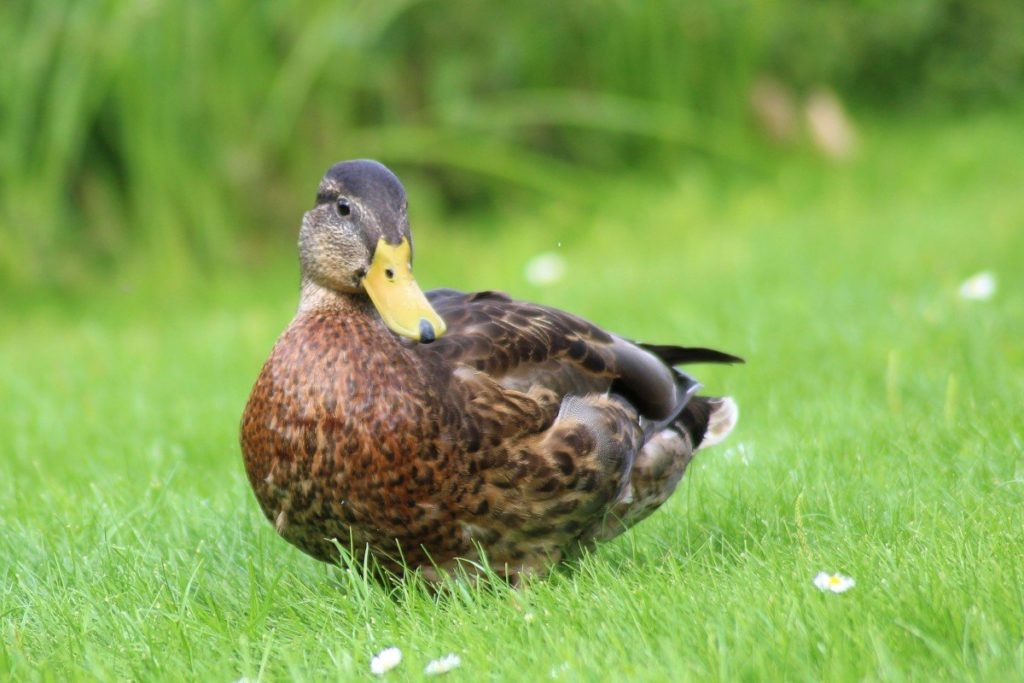To be able to combine a quality balanced diet for two different species
, we cannot do without science. Our goal is to find common and distinct features of these birds. Which will help to figure out what the food should include in order to be equally nutritious for both. And what components should be avoided.*information is advisory
Physiology and culture of eating behavior
Physiology and culture of eating behavior So, in order to understand the difference in food preferences, it is worth paying attention to the physiology and lifestyle of ducks and geese.
Geese
They can boast of a longer digestive tract and developed processes of the rectum. As a result, they are able to absorb 50% more fiber. A more developed stomach musculature allows them to easily digest large amounts of greens and succulent feed. For this bird, grazing on the ground with grass is mandatory. Without it, it will not grow at the proper rate. One adult can eat more than two kilograms of grass per day. If geese are kept for the purpose of breeding offspring, then there should be a reservoir nearby. The mating process takes place in the water. In its absence, the percentage of inseminated eggs becomes an order of magnitude smaller. Males differ from females in size and a tubercle on the beak that grows over time. Geese make two types of sounds: a characteristic “cackle” and hissing, in case of danger.

Ducks
It differs from other types of poultry in a more intensive metabolism. Food goes through all stages of digestion very quickly. Despite this, the level of digestibility is 15% higher than that of others. Ducks also have grass in their diet, but in smaller quantities. She is much more attracted to ant and dandelion leaves. A duck also needs a reservoir. She finds food in it: small fish, duckweed, and so on, reducing feed costs. The female ducks are rather gray and inconspicuous. But the males of all subspecies have a colorful, eye-catching color. They make one characteristic sound, called “quacking”.
But speaking about the differences, we can say that they are much less than the similarities. Geese and ducks belong to the same family. Both species are fundamentally aquatic. This determines the similarity in the structure of their bodies. Beaks, webbed feet, long necks and more. Both have developed down and feather covers. They secrete mucus, which is used to process feathers. Females of both species have a strong maternal instinct. The diet of both consists mainly of juicy greens. Both members of the family are quite smart, able not only to get food on their own, but also to navigate the terrain well. It would take too long to describe all the similarities of these birds. So we’ll go straight to the diet.
Balanced diet for ducks and geese
- First of all, the food for adults of both species should contain cereals as a source of carbohydrate. The mass fraction of which should be from 60 to 75%, of which no more than 8% bran. And include about 3 types of grains: corn, wheat, barley or oats. Corn should be a must. The rest are interchangeable. No more than 20% of cereals can be replaced with boiled mashed potatoes.
- Be sure to have meals in the diet in an amount of 5 to 10%.
- As a source of protein, feed of animal origin should be present: bone, meat and bone meal and others. But not more than 4%.
- Feed yeast has a positive effect on weight gain. However, their number should not exceed 4%.
- A good source of vitamins is herbal flour, its part can be from 5 to 10% of the total.
- And of course, one of the most important elements of nutrition is minerals. In total, they should not exceed 6% of the total diet. However, with the source of sodium, table salt, you should be careful. Its share should not exceed 0.5% of the daily diet.
You can read about food for goslings and ducklings here:
Compound feed for goslings
Compound feed for ducklings
What to feed ducks and geese? Read here:
Compound feed for geese
Compound feed for ducks
What should be the diet of poultry:
Complete feed for poultry
More about feed for broiler chickens:
Compound feed for broiler chickens from 1 to 7 days
Compound feed for broiler chickens from 1 to 5 weeks
Compound feed for broiler chickens from 5 weeks






